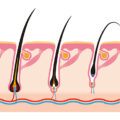Last updated on June 3, 2024

The hair restoration technique is also being used to successfully conceal and heal scarring in the eyebrow area with an eyebrow transplant Perth.
Eyebrow transplants have been around since the 1940s, however the use of more refined surgical techniques over the past 15 years is allowing physicians to recreate the appearance of a more natural looking brow.
The new eyebrows are created by harvesting hair follicles from the back of the scalp and then replanting them into the eyebrow area.
The use of single hairs enables the physician to meticulously follow the eyebrow contour to recreate the appearance of natural eyebrows.
Perth-based physician Dr Jennifer Martinick has successfully performed eyebrow transplants for 20 patients at her Nedlands clinic.
Dr Martinick said the procedure had been used for patients who had either lost their eyebrows or needed to conceal scarring from burns, explosions or plastic surgery.
In providing an example, she referred to how the procedure had been used to heal and conceal the scars a woman incurred from previous surgery.
Dr Martinick said the patient, who was referred to her by a West-Perth based plastic surgeon, had 4 mm wide and 2 mm pitted concave scars in her eyebrow area.
She said over 500 follicles were transplanted from the back of the patient’s head to create youthful thick eyebrows.
Like most patients, she required only mild sedation and a local anaesthetic during the three-hour procedure.
Dr Martinick said recovery time after the eyebrow transplant procedure was relatively quick with it only taking two to three days for the swelling to go down.
It usually took around three to four months after the procedure before the new eyebrows started to enter their anagen (growth) phase.
The full effect of the replanted eyebrows was usually evident after 9 to 12 months.
Dr Martinick said people who had the procedure would need to regularly trim their eyebrows because the replanted hairs grew at a much faster rate than natural brows.
“Eyebrow hair usually only grows at half the rate of scalp hair which has a growth cycle of around .30 mm – .41 mm per day,” Dr Martinick said.
“However, the transplanted eyebrows grow at the same rate of natural hair and will require fortnightly trimming.
“The anagen phase of the new brows usually begins at around 9 to 12 months after the transplant and regular trimming is needed after this.
“Reports from the international medical authority on hair loss, the International Society for Hair Restoration Surgery (ISHRS), show that the rapid growth phase of the transplanted brows usually slows down after a few years, thereby requiring less regular trimming.”
Dr Martinick said that like all forms of hair loss a medical diagnosis should be sought before a patient committed to an eyebrow transplant.
Eyebrow loss in men and women could be due to an accident, systemic disease, a congenital inability to grow eyebrows or the self-inflicted plucking disorder trichotillomania.








